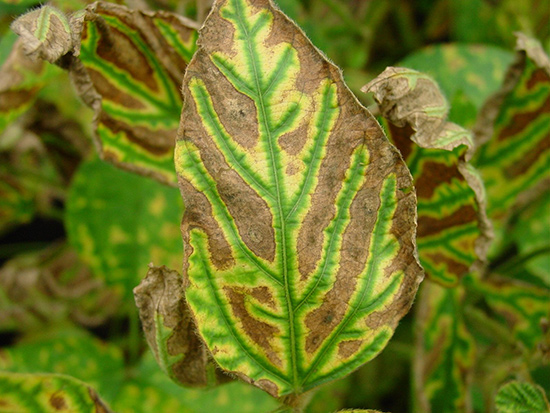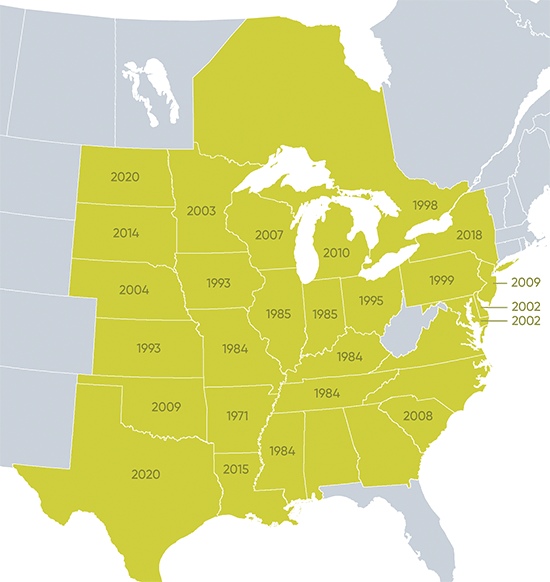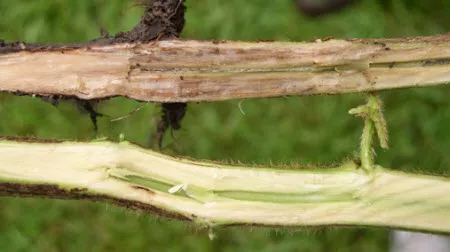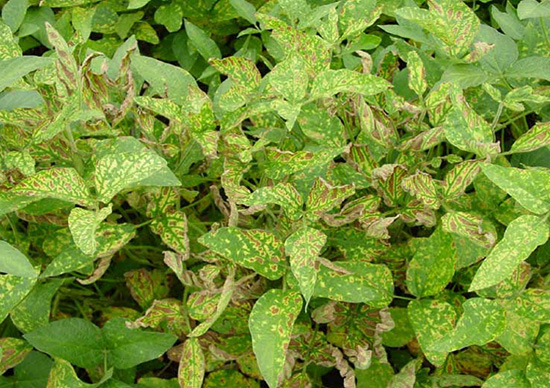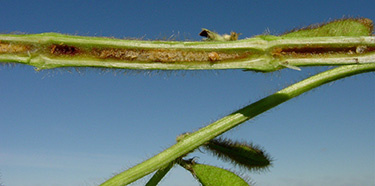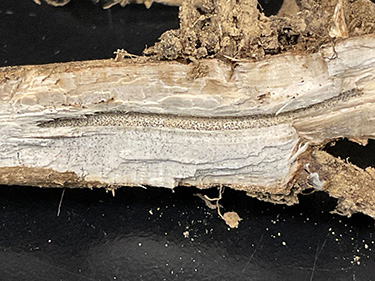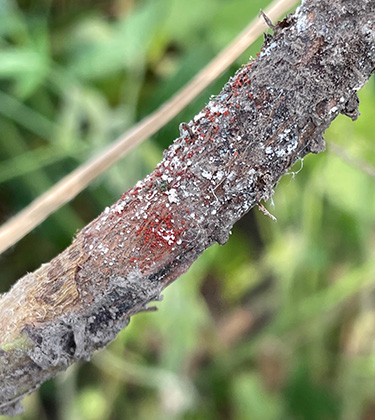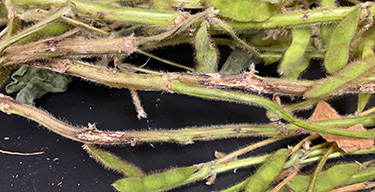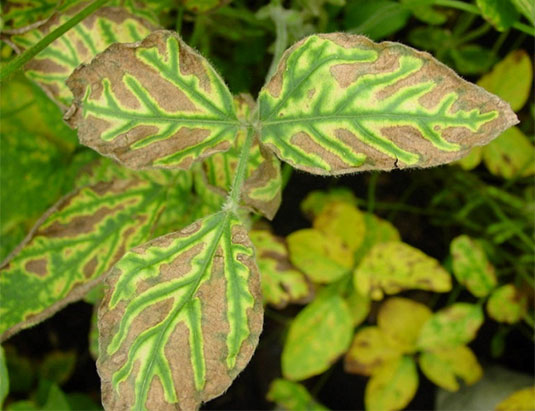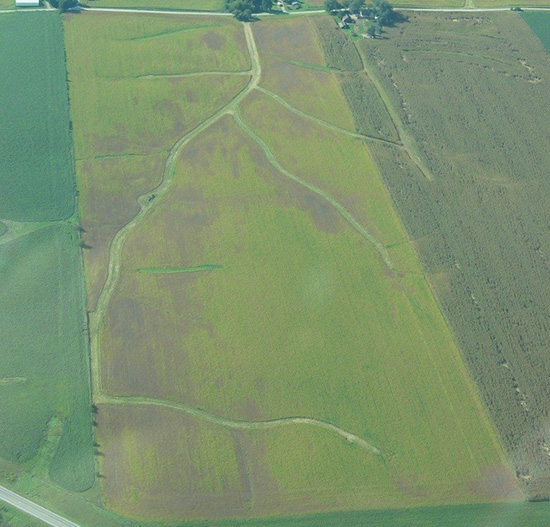2/2/2025
Sudden Death Syndrome of Soybeans

Crop Insights
Written by Mark Jeschke, Ph.D., Pioneer Agronomy Manager
Key Points
- Sudden death syndrome (SDS) has spread to most soybean-growing states and Ontario, Canada. Some states now rank SDS second only to soybean cyst nematode (SCN) in economic losses caused to soybeans.
- n North America, SDS is caused by the fungal pathogen Fusarium virguliforme, formerly known as F. solanif. sp. glycines.
- Early planting and cool, wet conditions early in the growing season often result in higher incidence of SDS. The disease is usually more severe if SCN is also a problem in the field.
- SDS often appears first in low, poorly drained or compacted field areas. Infection occurs early in the season, but foliar symptoms do not appear until mid-summer.
- As plants lose leaf area and roots deteriorate due to SDS, yield components are affected. Flower and pod abortion are common, resulting in fewer pods and seeds. Seeds may be smaller, and late-forming pods may not fill or mature.
- SDS varies in severity from area to area, and from field to field. Growers must understand the extent of infection in each of their fields to effectively manage SDS.
- Management practices for SDS include tolerant varieties, seed treatments, planting problematic fields last, managing SCN, improving field drainage, reducing compaction, and reducing other stresses on the crop.
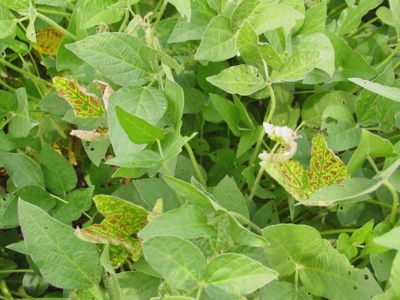
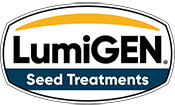

*2020 data are based on average of all comparisons made in 76 locations across MN, ND, SD, IA, MO, IL, IN and OH through Dec 1, 2020. Multi-year and multi-location is a better predictor of future performance. Fluopyram use rate of 0.15mg ai/seed.
Components of LumiGEN® seed treatments for soybeans are applied at a Corteva Agriscience production facility or by an independent sales representative of Corteva Agriscience or its affiliates. Not all sales representatives offer treatment services, and costs and other charges may vary. See your sales representative for details. Seed applied technologies exclusive to Corteva Agriscience and its affiliates. Pioneer® brand products are provided subject to the terms and conditions of purchase which are part of the labeling and purchase documents. ILEVO® HL is a registered trademark of BASF.
The foregoing is provided for informational use only. Please contact your Pioneer sales professional for information and suggestions specific to your operation. Product performance is variable and depends on many factors such as moisture and heat stress, soil type, management practices and environmental stress as well as disease and pest pressures. Individual results may vary. Pioneer® brand products are provided subject to the terms and conditions of purchase which are part of the labeling and purchase documents.
